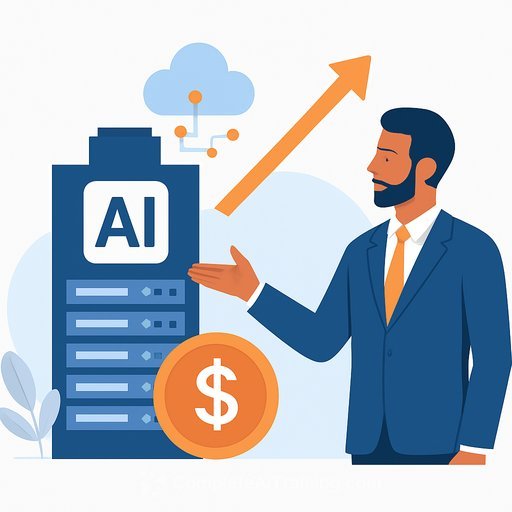AI's $5-7 Trillion Data-Center Buildout Will Tap Every Debt Market
JPMorgan says the AI data-center surge isn't a question of which market funds it. It's a question of how to structure deals to reach every pocket of capital. Their base case: at least $5 trillion in spend over five years, with an upside path to $7 trillion.
The result is a credit cycle anchored by hyperscalers, project finance, securitizations, and private credit-running in parallel. If you work in debt capital markets, treasury, or private credit, this is your pipeline.
The funding stack, by the numbers
- Investment-grade bonds: About $1.5 trillion over five years, including roughly $300 billion next year for AI data centers alone-close to one fifth of the total high-grade market if issuance lands near $1.6 trillion.
- Leveraged finance: Roughly $150 billion over the next half decade.
- Data-center securitizations: Up to $40 billion per year backed by leases and contracted cash flows.
- Private credit + public support: Still a $1.4 trillion gap to cover, per the bank's estimates.
- Internal cash: Hyperscalers remain the anchor, diverting around $500 billion of their $700 billion in annual net operating income into capex.
Why demand isn't the constraint (yet)
Orders are flowing. A $30 billion bond from Meta set a record for the largest high-grade order book, and investors lined up to put another $18 billion to work for Oracle's data-center funding. The ceiling near-term isn't appetite-it's physical: compute, real estate, and energy availability.
As long as those bottlenecks get addressed, issuance can keep coming without choking on demand. That's the setup JPMorgan believes could reaccelerate growth in both the bond and syndicated loan markets.
What could break
The base case is big and steady, but the path won't be a straight line. The obvious risk: a repeat of the late-1990s fiber build, where overcapacity drove defaults and torched valuations.
Two early warning signs: more than half of industry executives now flag potential distress, and the rise of complex off-balance sheet structures for AI capex. Those vehicles can be useful-until they aren't. Transparency, counterparty strength, and the durability of underlying compute demand matter.
Implications for issuance and spreads
With $300 billion in AI-linked high-grade supply projected next year, investors should expect bigger deal sizes, more frequent taps, and wider sector breadth (tech, utilities, real estate, infra). The mix will pull in asset-backed structures tied to data-center leases and power contracts.
On spreads, scale can compress risk premia for top-tier issuers, while second-tier names pay up. Expect a sorting effect: stronger covenants and contracted power win; speculative, power-light projects pay-or get sidelined.
How financings are likely to get structured
- IG unsecured + hybrids: Core capex at the parent; hybrids to protect ratings while pushing tenor.
- Project finance + PPAs: Ring-fenced power and land with long-term offtake; potential government support in select regions.
- Securitizations: Notes backed by data-center leases and availability payments; look for shorter WAL tranches plus mezz to widen distribution.
- Private credit: Unitranche and holdco loans where speed, flexibility, or complexity outstrips public markets.
What to watch (and how to position)
- Power first: The spread between secured power capacity and planned compute. Fund projects with contracted power; be cautious elsewhere.
- Order books vs. pricing: Big books are nice; final pricing tells you true depth. Track concession trends on jumbo prints.
- Off-balance sheet exposure: Read the fine print on keepwell agreements, step-in rights, and performance triggers.
- Tenant concentration: Securitizations tied to one hyperscaler carry idiosyncratic risk-diversification and covenant clarity matter.
- Cycle analogs: Keep the late-90s fiber map in mind: supply gluts tend to show up at the edge (land, power interconnects) before they show up in occupancy rates.
Bottom line
This buildout will touch every debt market. The winners will be issuers who secure power and structure clean cash flows-and investors who underwrite real capacity, not headlines.
Even if the thesis holds, expect dispersion. There will be standout winners-and some equally loud losers-given the size of the capital stack and the winner-takes-most dynamics across parts of the AI ecosystem.
Further reading: For market context, see BIS research on private credit growth here and SIFMA's corporate bond issuance data here.
If your finance team is building AI fluency for budgeting and tooling, this curated list of AI tools for finance is a practical start: AI tools for finance.
Your membership also unlocks:






